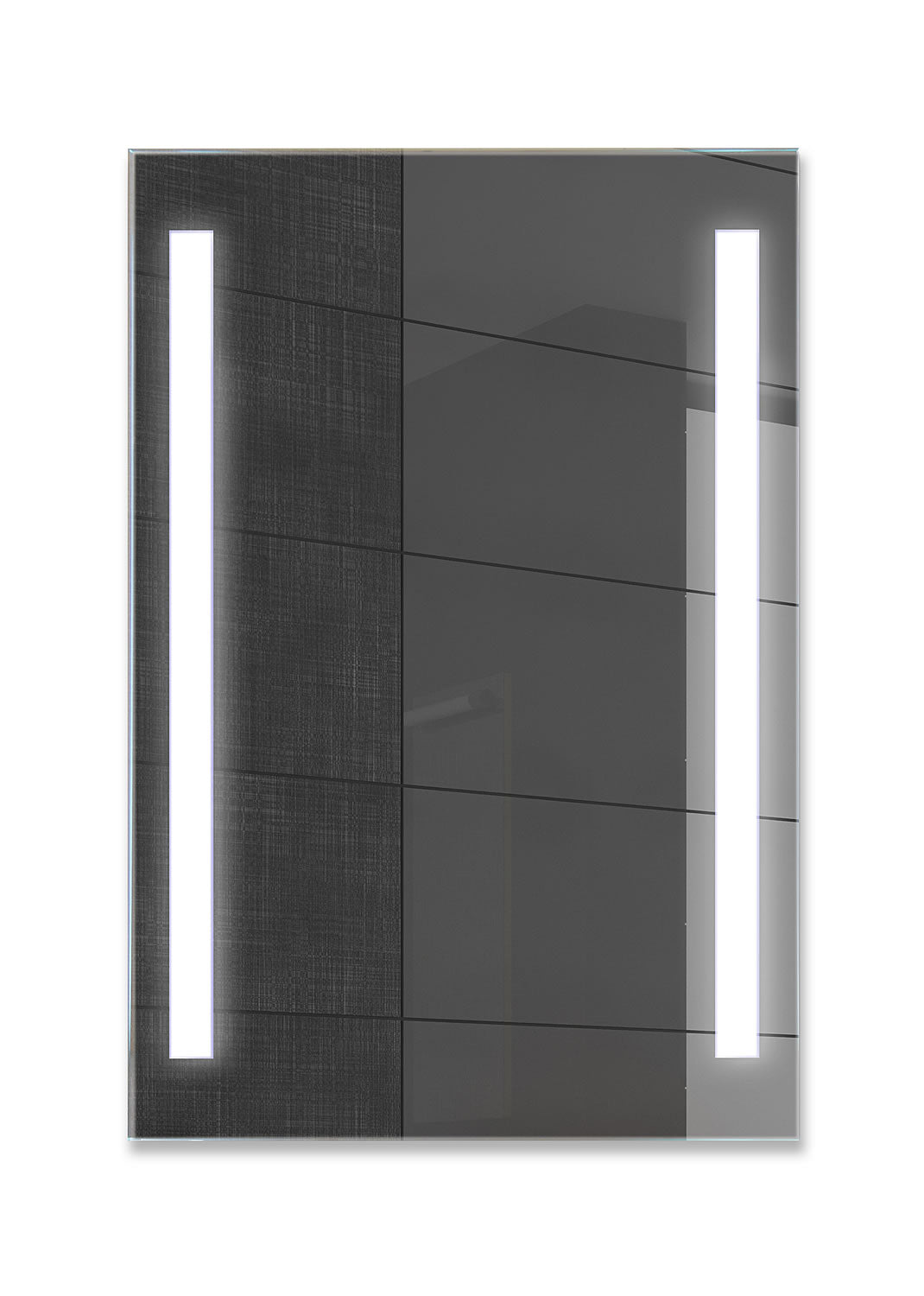
ClearMirror LED CLEARLITE LED Bathroom Mirrors are Fog-Free and have a (CRI) of 94+
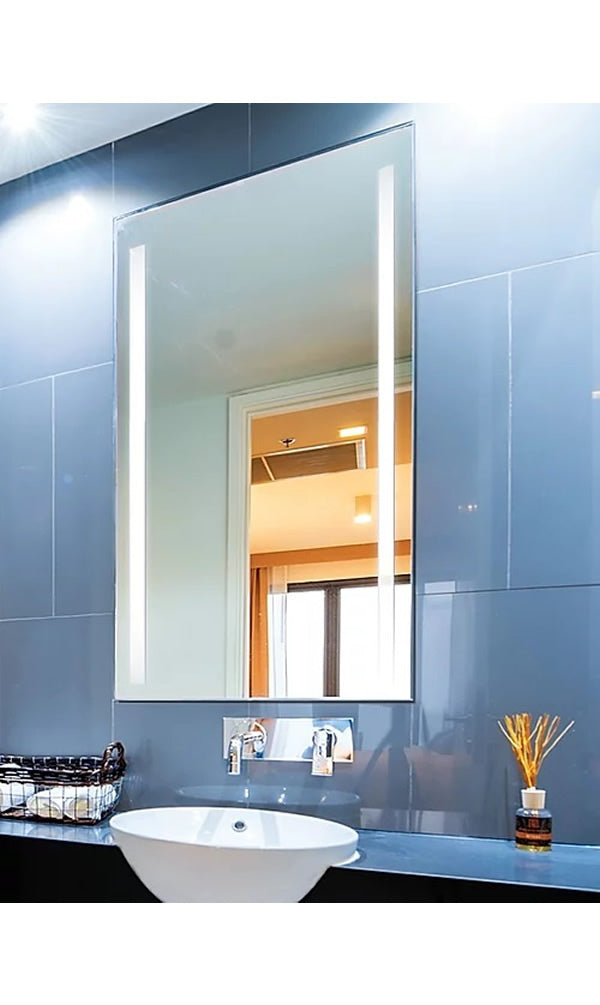
ClearMirror LED CLEARLITE LED Bathroom Mirrors are Fog-Free and have a (CRI) of 94+

ClearMirror LED CLEARLITE LED Bathroom Mirrors are Fog-Free and have a (CRI) of 94+

Top-Light ClearLite shown - color changes also apply for Side-Light ClearLights.
ClearMirror LED CLEARLITE LED Bathroom Mirrors are Fog-Free and have a (CRI) of 94+


There are LED Bathroom Mirrors, and there are LED Bathroom Mirrors. The ClearMirror Clearlite™ mirror is one that's chock full of features. The LED panels are ultra-thin - 4mm - rendering complete and even coverage. The high-output LEDs are rated for 70,000 hours of use - 96 years at two hours per day. The mirror itself has a 6mm thickness with an overall thickness of less than an inch. There are polished edges and frosted LED illumination sections inset from the side or the top - your choice. The mirror remains fog-free using ClearMirror fog-free technology. There's a dual mounting system for easy installation - use the mounting holes or Z-hanger. 24" Wide x 36" High, UL Listed, Made in the USA and covered by a 5-Year Replacement Warranty.
Custom sizes available - contact us for information.
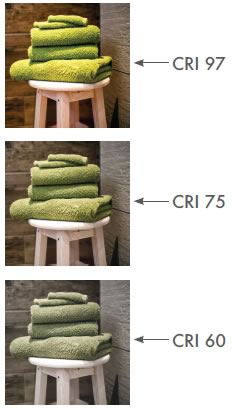
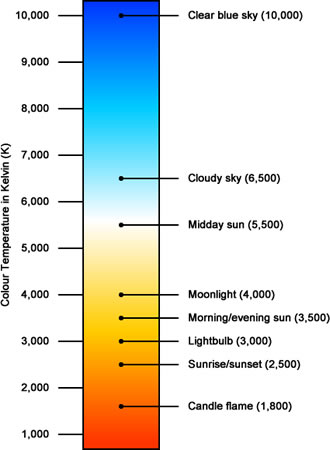
If you're planning for an outdoor day, the higher the color temperature the better. For evenings on the town, 2,700&deb; K. to 3,500° K. is best. For office environment lighting conditions, color temperatures around 4,500° K. provide the closest match.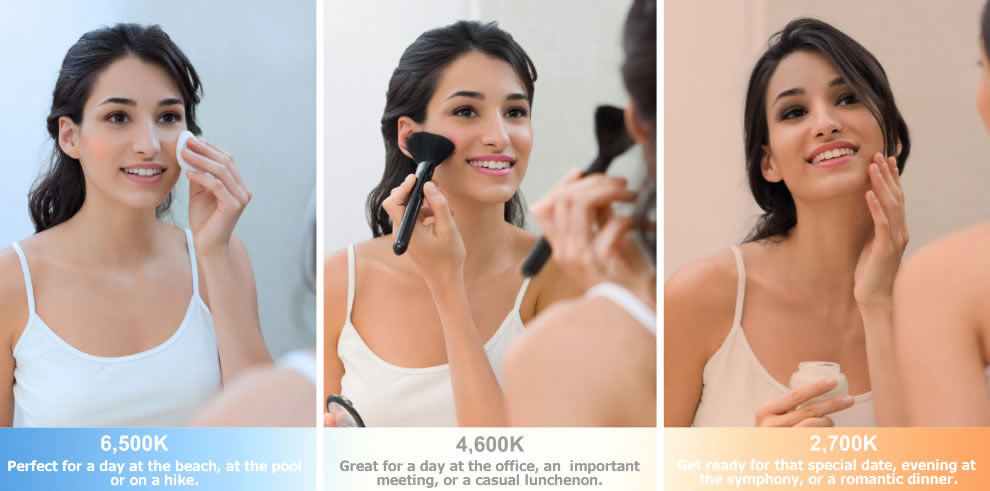
Custom sizes available - contact us for information.
Features
- ClearMirror's CLEARLITE™ is a backlit mirror with two frosted panels emitting high-output LED lighting with your choice of 3,000 degrees Kelvin or 5,300 degrees Kelvin. 3,000k is very, very close to normal indoor lighting. 5,300k is very close to "blue sky" daylight.
- The LEDs. have a CRI (Color Rendering Index) of 94+. You can't get much better. And they're rated for 70,000 hours 96 years - 2 hours a day. There are not hot spots and no dead spots. Using ClearMirror fog-free technology, the mirror remains fog-free.
- Installation is just like an ordinary wall-mounted light fixture. The mirror is hardwired and can be wired into the regular bathroom light switch or a separate switch.
- Overall, the mirror depth is under one inch and the overall size is 24" x 36". The mirror edges are flat polished. Mounting can be achieved via the mounting holes or the Z-bracket included.
- Made in the USA and extensively UL tested and approved for use over vanities, plus C-UL approved. Meets California Title 24 requirements. A 5-Year Manufacturer's REPLACEMENT warranty is included.
About CRI
Color Rendering Index (CRI)

The color rendering index (CRI) is a measure of the ability of a light source to display the colors of various objects faithfully when compared the a natural light source. Light sources with a high CRI value are desirable in color-critical applications such as neonatal care and art restoration. Generally the higher the CRI, the more pleasing to the eye.
The highest possible CRI value is 100 and is frequently achieved by incandescent or "regular" light bulbs. Fluorescent "cool white" bulbs have a CRI of around 50 to 60, but some high-end multi-phosphor fluorescents can go up to 98. LEDs typically have an a CRI around 80, and better, more expensive LEDs can have CRIs up to 97 or 98.
The highest possible CRI value is 100 and is frequently achieved by incandescent or "regular" light bulbs. Fluorescent "cool white" bulbs have a CRI of around 50 to 60, but some high-end multi-phosphor fluorescents can go up to 98. LEDs typically have an a CRI around 80, and better, more expensive LEDs can have CRIs up to 97 or 98.
3,500k vs. 5,500k
Color Temperature Comparison

Color Temperature is not Brightness Color temperature describes the color of the light.
The color temperature of any light bulb, including LEDs is measured in degrees Kelvin ("k"). The higher the color temperature, the closer the light is to pure white light at 10,000° K. A blue sky sunny day at noon has a color temperature of about 5,500° K. On a very bright cloud-covered day, the sky registers a color temperature closer to white, of about 6,500° K., while a "regular" incandescent light bulb has a color temperature of about 2,700° K.
The color temperature of the lighting in your mirror may affect the way you apply your makeup and then how it's viewed by others, in a real-life situation. It's best, therefore, to choose a lighted makeup mirror with a color temperature to approximate your most frequent environment.
Many of our LED mirrors have their color temperature specified. And some makeup mirrors have adjustable or switchable color temperatures. For those where color temperature is not specified a reasonable guide is this: For incandescent bulbs, a color temperature of around 3,000° K. is normal. LEDs with no color temperature specification often have color temperatures around 4,000° K. The chart at right can serve as a guide.
The color temperature of any light bulb, including LEDs is measured in degrees Kelvin ("k"). The higher the color temperature, the closer the light is to pure white light at 10,000° K. A blue sky sunny day at noon has a color temperature of about 5,500° K. On a very bright cloud-covered day, the sky registers a color temperature closer to white, of about 6,500° K., while a "regular" incandescent light bulb has a color temperature of about 2,700° K.
The color temperature of the lighting in your mirror may affect the way you apply your makeup and then how it's viewed by others, in a real-life situation. It's best, therefore, to choose a lighted makeup mirror with a color temperature to approximate your most frequent environment.
Many of our LED mirrors have their color temperature specified. And some makeup mirrors have adjustable or switchable color temperatures. For those where color temperature is not specified a reasonable guide is this: For incandescent bulbs, a color temperature of around 3,000° K. is normal. LEDs with no color temperature specification often have color temperatures around 4,000° K. The chart at right can serve as a guide.
If you're planning for an outdoor day, the higher the color temperature the better. For evenings on the town, 2,700&deb; K. to 3,500° K. is best. For office environment lighting conditions, color temperatures around 4,500° K. provide the closest match.

Choose options

ClearMirror LED CLEARLITE LED Bathroom Mirrors are Fog-Free and have a (CRI) of 94+

ClearMirror LED CLEARLITE LED Bathroom Mirrors are Fog-Free and have a (CRI) of 94+

ClearMirror LED CLEARLITE LED Bathroom Mirrors are Fog-Free and have a (CRI) of 94+

Top-Light ClearLite shown - color changes also apply for Side-Light ClearLights.
